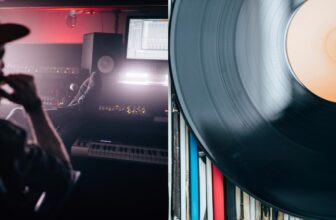How To Get On Spotify Playlists (2024)

Spotify is a useful tool to build your audience and enlarge your fanbase despite its drawbacks of lower payouts to musicians. To get a larger fanbase, it’s vital to get your music on Spotify playlists by using the Spotify Artist, independent curators, or getting familiar with Spotify Algorithms.
Spotify has exponentially grown over the last decade, becoming the number one place for people to enjoy their favorite songs. Claiming to serve over 200 million users, Spotify is a streaming giant.
While a few celebrity musicians have chosen to either withdraw or not place their music on the famous Swedish streaming platform, the vast majority of artists worldwide don’t have enough of a fan base to do this. Spotify offers great potential to build and enlarge your fanbase.
Contents
How To Get On Spotify Playlists At a Glance
- Despite lower payouts, Spotify is a vital platform to grow your fanbase, with over 200 million users. Getting on playlists is key for increasing song streams.
- Competing for playlist placement is tough, and you can’t control Spotify’s algorithm, but you can influence factors like engagement.
- Editorial playlists by human editors, algorithmic playlists, and user-created playlists are essential.
- Spotify for Artists: Verify your profile, update information, and submit new songs through Spotify for Artists.
- Algorithm Insights: Spotify’s algorithm considers engagement, so focus on likes, shares, and trends.
- Independent Curators: Collaborate with independent playlist curators and create your playlists.
- Promotion Services: Consider platforms like Submithub and playlist submission sites, but be cautious.
What are the Different Types of Spotify Playlists?
It is not a secret that the most effective way to increase the number of streams of your songs is to get them on playlists.
Playlists are often what people hear when they go running, when they sit in a café, or even when they shop at their local supermarket.
Spotify has its own editorial playlists, often considered the most authoritative ones. A team of human editors puts together these playlists, making sure that every song included fits the overall mood, genre, or theme.
The platform also creates algorithmic playlists produced not by humans but by algorithms. These playlists are highly considered by users, especially because they are tailor-made for them.
However, Spotify users can build their own playlists, too (user playlists). Even you, as an artist, could create a playlist from scratch, maybe including your favorite songs or cross-promoting another musician you like.
If you manage to place one or more of your songs on a playlist featuring artists, styles, and genres similar to your own, you might get to potential new fans for free. This is the theoretical premise, which works extremely well. To go from theory to practice, however, is a bit more difficult than it seems.
First of all, the competition is crazy. You are competing with countless other artists from every corner of the world to place your song on the right playlist.
Another problem is that you have absolutely no control over the algorithm Spotify uses for its personalized playlists; you can only try to influence some of the factors that can help you get recognized.
However, there are a few ways you can employ to increase your chances of getting your music on the right playlist.
1. Spotify for Artists – Submission for Playlists
Spotify for Artists is the app/platform musicians use to manage their presence on the Swedish music store. Verifying your profile on this platform is the first (and possibly the most important) step you can take to get your music on playlists.
Through this app, you can update your profile picture, write an effective biography, include any upcoming tour dates, and so on. You can also check your stats and get in touch with the editorial team.
Whenever you plan to release a new song on Spotify, log into your Spotify for Artists profile and submit it. You can find detailed instructions on how to do that on the platform’s official website.
You can only submit songs for consideration that are not yet released. Therefore, make sure to set a release date in advance with your music aggregator (e.g., CDBaby, RouteNote, etc.). Otherwise, they will just release your track as soon as possible, and you will miss the opportunity!
All the data you submit also, no doubt, feeds the Spotify algorithms. This moves us on to our next point:
2. Spotify Algorithmic Playlists
There is quite an incredible amount of Spotify analytics to determine what your tracks are about (bpm, happiness, live/studio, vocals, instrumental, energy level, etc.). Once you upload a track, their AI can automatically tell a whole lot about your song before it’s even listened to by a single person!
Playlists can often be extremely specific to certain genres, styles, etc. Spotify automatically creates playlists via its own algorithms based on a lot of different variables.
This is likely built up using data from people’s listening habits as well as its abundance of additional analytical data about your tracks.
Relevance
If you really want to play the algorithm game, you may have to make quite a few concessions in how you create your tracks. If you have a very small fan base at the moment, you will have to heavily promote your track to try to gain a bit of traction.
Please note: a lot of the points below regarding Spotify algorithmic playlists are based on educated speculations and experience. Based on the experience and findings from many people in the industry, they are all likely true.
- If most people skip your track after the first 10 seconds, this is likely a big red flag to Spotify. This could have quite an impact on how you write or produce your music, i.e. you may need to ditch long build-ups and get tracks going within the first 10 seconds.
- Understandably, Spotify gives a much bigger weight to tracks that are highly liked, shared, and saved in user’s manual playlists.
- Spotify appears to give a lot of weight to trending tracks. If you have a big release with a lot of shares in a short space of time, it can make a big difference to your algorithmic playlist success.
- Spotify Algorithmic playlists are very good at grouping similar styles of tracks together. For example, there are countless amounts of sub-genres of electronic music, and a minimal techno track will very likely not be put into a playlist full of progressive house tracks.
Release Schedules
The changing landscape of users is greatly changing how artists release their music.
That’s why an important strategy might be to release singles often rather than one full album once a year. You should put out fresh music regularly and continually gain traction, and the algorithm may start working in your favor.
Create Your Own Playlists
Creating and promoting your own playlists, featuring other similar artists, and putting some of your songs here and there can also drive the algorithm in your favor.
By involving other artists in the process, your playlists will be shared by more people on social media. This way, streams will increase, and it may help your ‘rankings’!
3. Independent curators
If you apply the last piece of advice highlighted in the previous paragraph, you’ll become an independent playlist curator. Guess what? There are tons more out there you can get in touch with.
A lot of independent musicians adopt this strategy to increase their own Spotify presence. Find the ones right for your niche and ask them to include your songs in their playlists. Maybe help them in return by including their songs in the ones you create, and voilà: you’ll have instantly increased the chances to build a bigger audience on Spotify.
Regular users often create Spotify playlists too. Local radio stations, blogs, music journalists, and anyone involved in the industry may also include their favorite tracks or the songs they have recently featured in specific playlists.
The key concept here is to get in touch with independent curators keeping in mind they are human beings. Don’t hate them if they don’t get back to you straight away, and make sure you don’t waste their time: always check what kind of genre or style they are interested in and evaluate whether your music is a good fit before submitting.
These are just a few ideas to increase your chances of getting on Spotify playlists. Remember that growing on Spotify requires a lot of hard work. Trying to game the system (such as paying to get more streams) is not allowed! Be prepared to put in the necessary work, and you will finally be successful.
Submit Hub
Submithub is an interesting site to pitch your music to bloggers and playlisters. There are limited free credits available, but in general, the real benefit comes from purchasing credits to submit to these influencers.
We’ve written a Submithub review article, which you should definitely check out. Submithub is very convenient and useful for pitching your music, but there are quite a few disadvantages to this type of music promotion model, which you should read about.
Playlist Submission Sites
Search up ‘Spotify playlist submission,’ and there will be many results. Some of these are probably useful; however, read the conditions of submission before doing so.
Some playlisters require you to follow their playlists on Spotify or follow their social media profiles. A cynical person may conclude that the purpose of a good deal of these playlist submission services is just to increase the following of their brands or playlists, and perhaps not a lot of effort goes into reviewing the submissions at all.
It’s up to you to figure out how useful they are!
Drive Audience to Spotify from Off-Platform
As the most important thing for them is to get more and more people to listen to music on Spotify, they love it when artists bring listeners from off-platform. Sharing your songs, EPs, and albums on your social media, blogs, and anywhere you can will work greatly in your favor.
Spotify will immediately recognize that you are driving traffic from off-platform and reward you by making you more present on their algorithms. So, sharing your Spotify links on your social media, website, and blogs can be a great help to enlarge your audience and get the attention of the Spotify algorithm.
Summary
I hope that’s shed some light on the different types of Spotify playlists and what it takes to get included. As Spotify is the leading streaming platform in the world, getting your playlist there would be a massive spike in your audience numbers. I hope that you can use this information to get some traction for your next releases!





